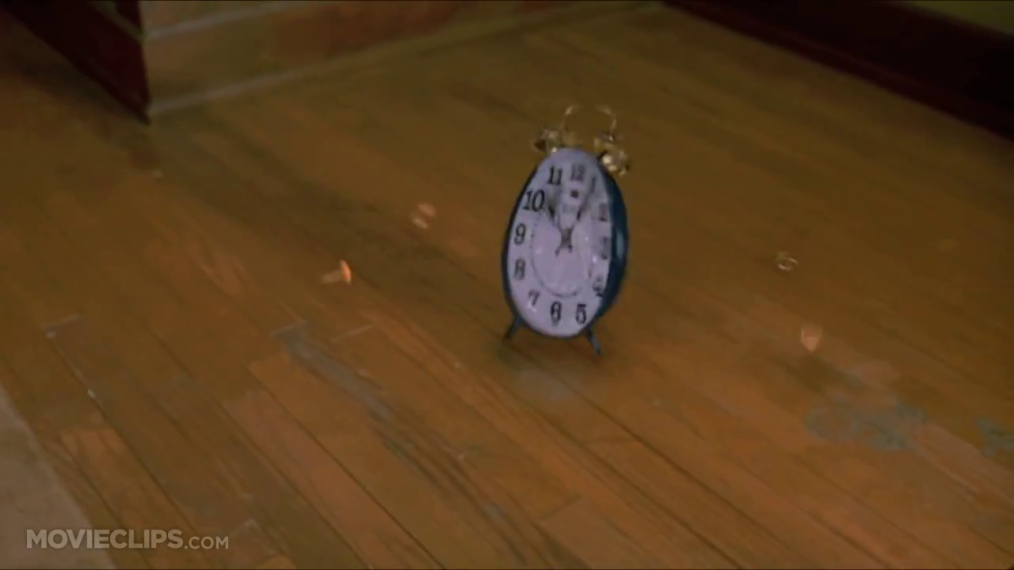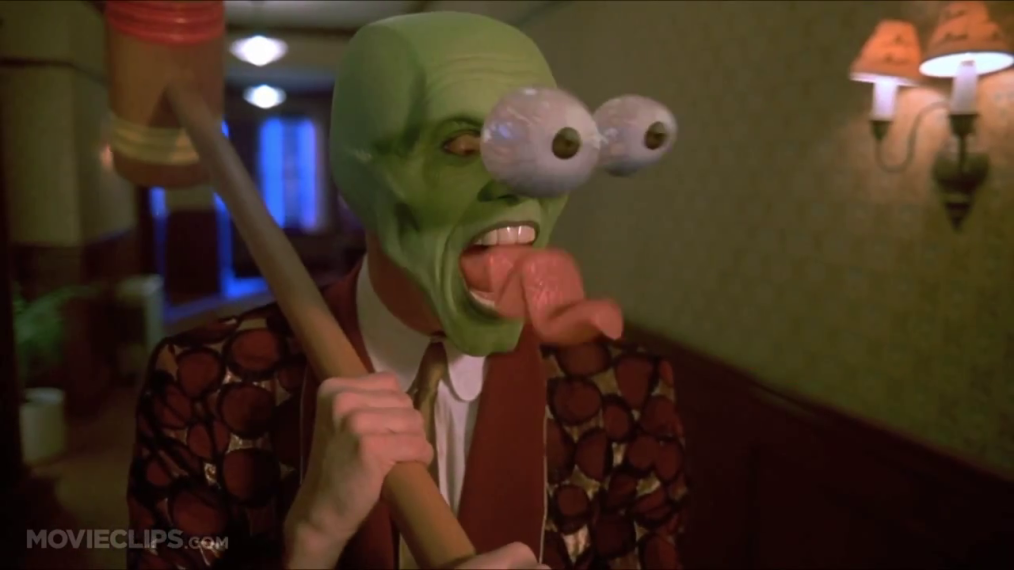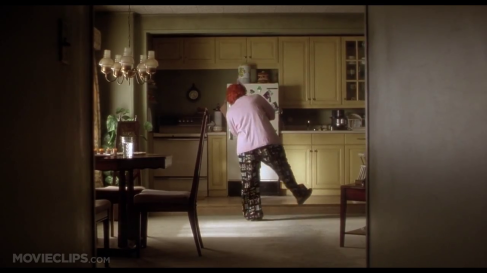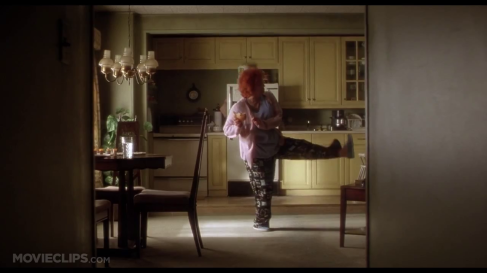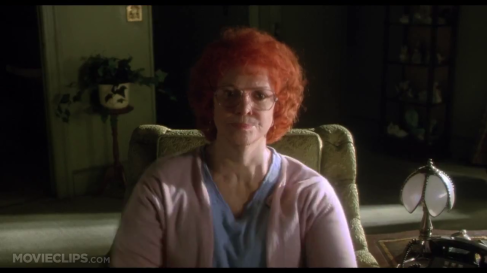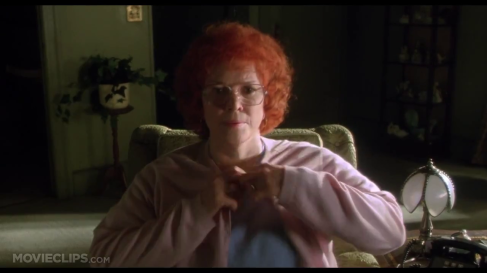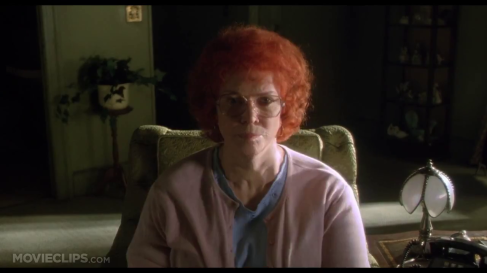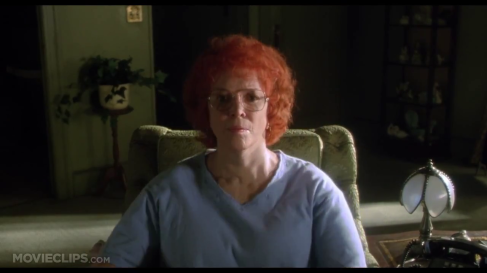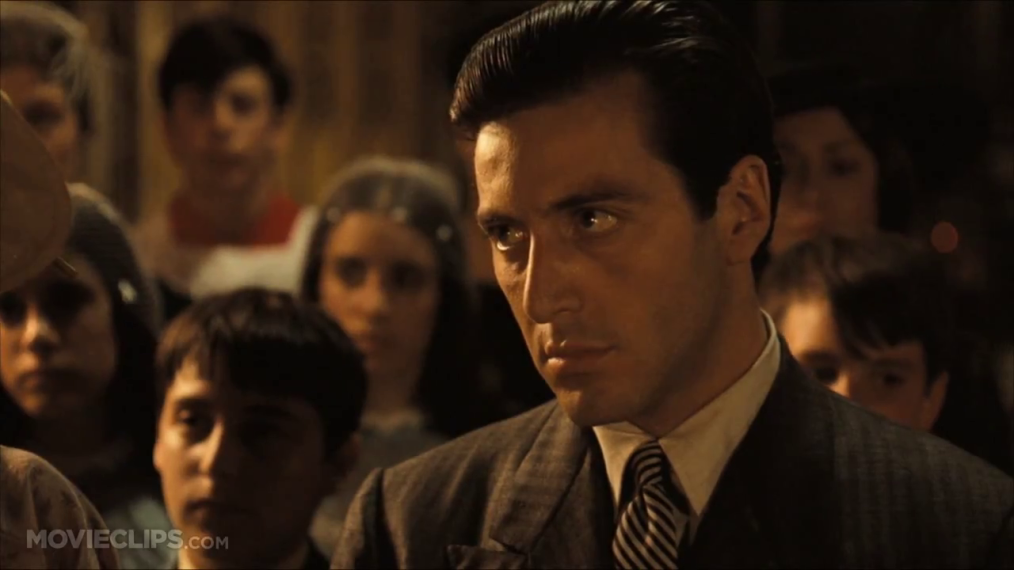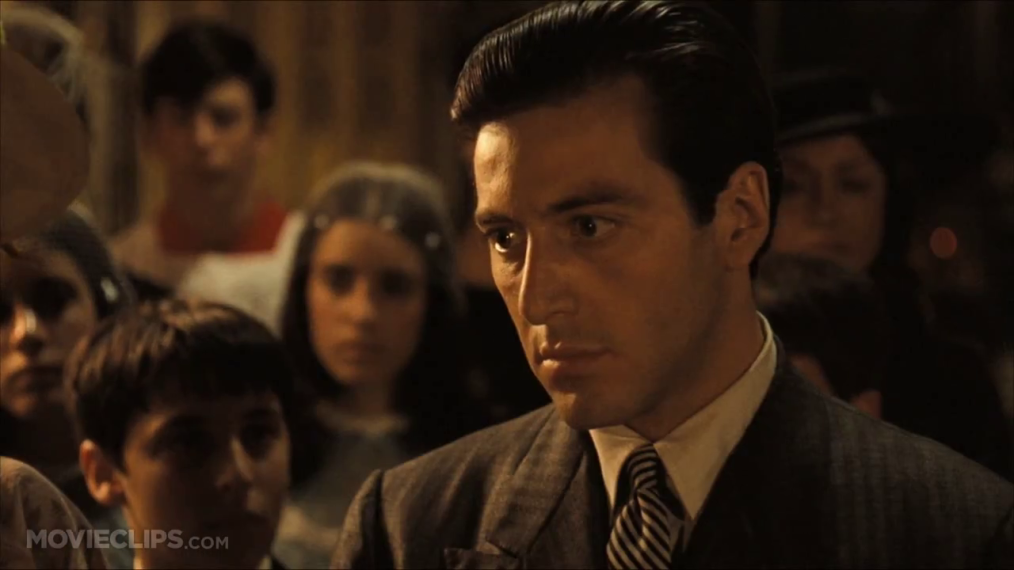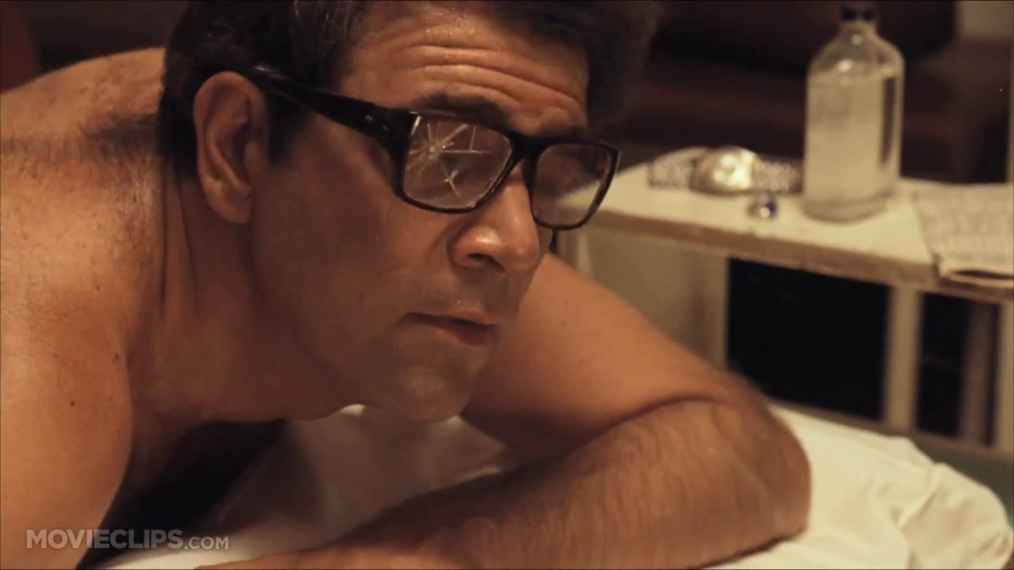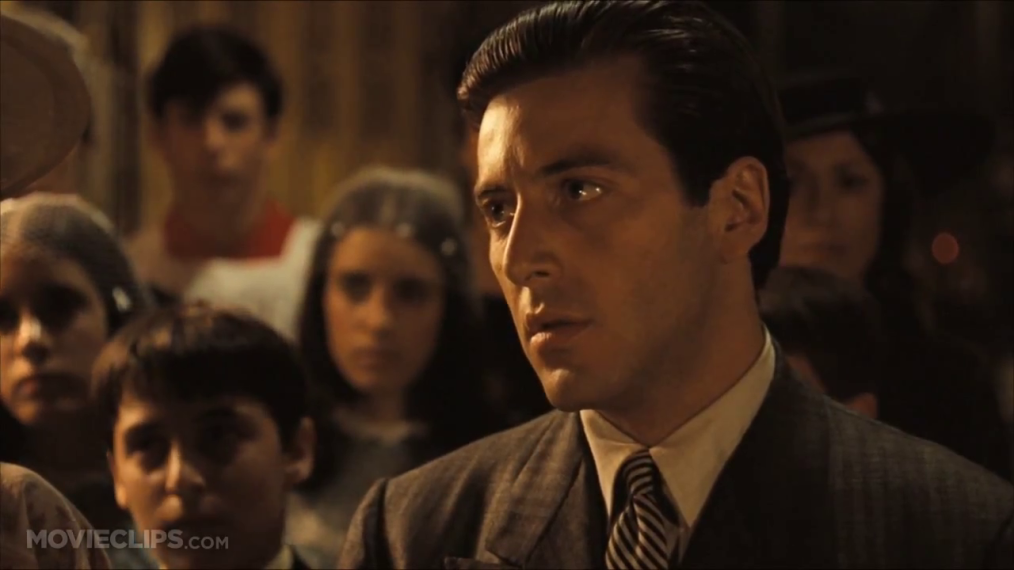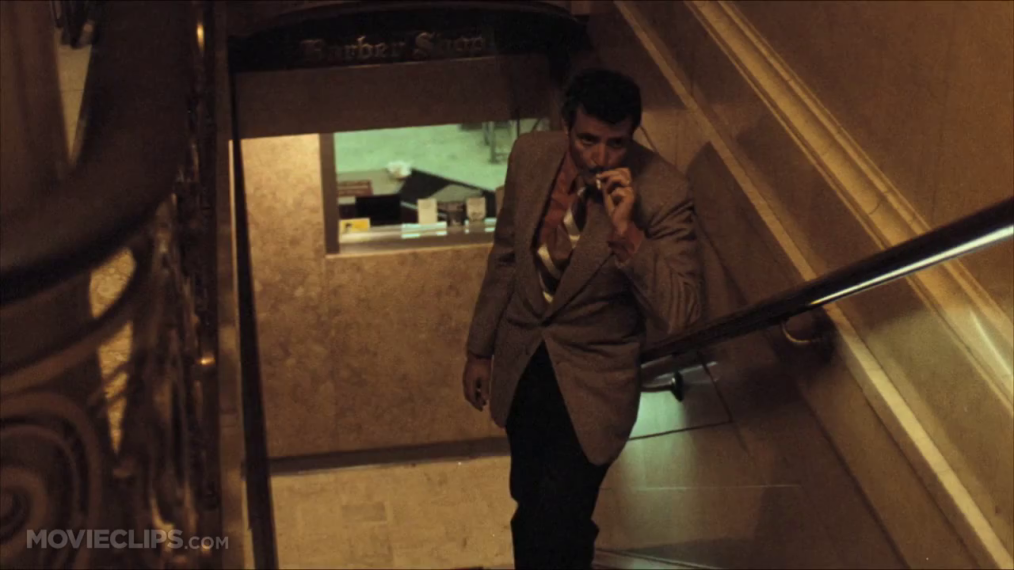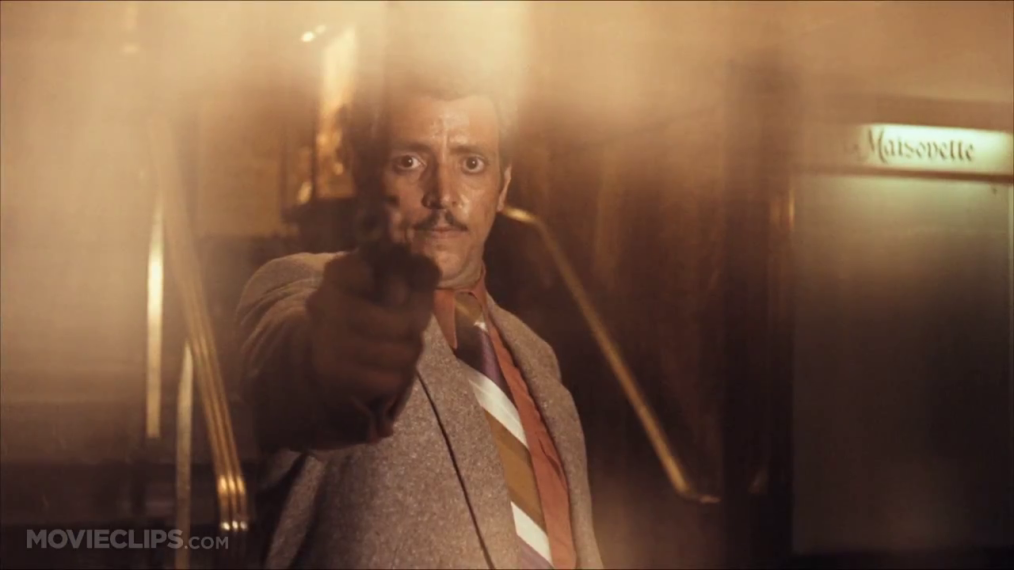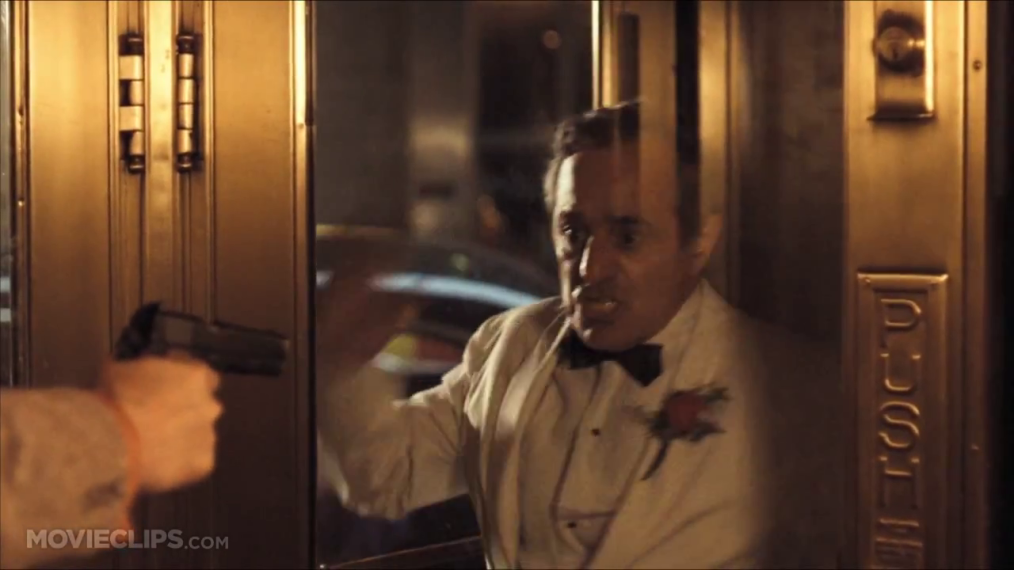This week, I studied this clip from Charlotte’s Web (2006). I’ll skip the shot count today because I think we all get the point and the emphasis this time is not the editing but the sound design. Another thing I’ve been asked to emphasize is anthropomorphism. These things go hand in hand but I’ll get to that later. In this scene, Templeton the rat is stealing a rotten egg to eat while Avery (the boy) is trying to attack Charlotte the spider. There are a lot of fast cuts as this scene has a lot of action. I have to admit this was a very confusing scene the first time I watched it because it was out of context. I didn’t know the egg was rotten so a lot of the scene didn’t really make sense. Even when I got context for that, it seemed rather arbitrary in the acting. Avery just appears and wants to catch the spider.
It’s a tad fast and doesn’t feel motivated. In the 1973 animated film of the same name, the scene felt less arbitrary as Avery seemed more motivated and the smashing of the rotten egg was more directly related to his actions. I wish I could find video or an image of it but alas there isn’t much of that movie on the internet.
The focus of the sound design is to sell the anthropomorphic animals to the audience, mostly through dialogue. Anthropomorphism is depicting non-human things so that they appear to be human, or at least more human. This often used in film to make an animal more human like Templeton in Charlotte’s Web or Number 5 from Short Circuit (1986).
http://www.youtube.com/watch?v=WjeptaI2T8E
There is a wide range of anthropomorphic characters that are more or less human. There are important visual aspects like clothing, posture, and expression. Audio aspects like voice, dialogue, and accent. And content aspects like purpose of action, content of dialogue, and role in a story.
Visual aspects can completely sell anthropomorphism. Humans are very self centered and want to see themselves everywhere. Even by arranging two dots and a curved line, we see a human face. This even applies when we turn it on it’s side. :) Here’s an example of how inanimate objects appear human with no dialogue or even movement:
http://www.youtube.com/watch?v=mFhHRYJsjgI
It’s this element of psychology that allows us to accept stylized figures as human. If you read Understanding Comics by Scott McCloud, he goes into great detail with how we as humans identify human traits on a scale. To sum it up, we pick up specific patters in images to create a human being. We can obviously look at a film of Brad Pitt and see that he is a human, but we also see Naruto as a human despite his stylized proportions just as well as we see Mickey Mouse or Bugs Bunny as human despite the fact that they are stylized animals that don’t look like anything that exists. The biggest cue we get from these characters is facial expression. That’s how we saw the faces in the commercial above. It’s also how we identify Templeton as human-like in the clip. His face has a huge dynamic range in expression, much more than a real living rat. Subtle expressions like a sly smile or smirk sell him as more than just a rat but a character on which emotion can be projected. In addition, by giving human poses or actions to animals or inanimate objects we can see them as human. For example, the Ent race in The Lord of the Rings: The Two Towers (2002):
http://www.youtube.com/watch?v=UTFP9QQzEL4
Or the main characters of Disney’s G-Force (2009):
http://www.youtube.com/watch?v=7bVY_UspXyc
In the last example we also saw animals wearing clothing, or rather accessories of clothing, which is an exclusively human trait. When we see these traits, we no longer see animals but human-like characters. These traits can sell humanity alone but they don’t always do so. Characters like Pluto have a great range of emotion but he still registers as an animal.
Despite this, the focus of this week’s analysis is sound. There are also a lot of audio cues that add to anthropomorphism. The primary tool is speech or dialogue. In the Charlotte’s Web clip, Templeton is talking. By giving him that trait he is a much human character because he talks like a human. This clip isn’t the best example of this trait because despite the animals voices being supplied by humans, many of them are just making animal sounds because Avery and Fern are around. Templeton doesn’t have much dialogue either and most of his lines are bad puns. An earlier scene in the film exemplifies this trait more:
http://www.youtube.com/watch?v=JoEU1L2kueo&feature=relmfu
But that’s a lot of information to analyze, so I see why it wasn’t picked for this analysis. However, this scene from The Chronicles of Narnia: Voyage of the Dawn Treader (2010) draws attention to the speech of a non-human character:
http://www.youtube.com/watch?v=Sn0lJnt9PZ8
The tonal nuance in voice acting makes a huge difference in the way we view the character. In this clip, Templeton’s voice is provided by actor Steve Buscemi. His high, nasally voice is a good match for a scheming rat. It’s something we would expect. If James Earl Jones were to have this role, it would be surprising, probably funny. We know as an audience what we expect for something to sound like and we are ready to believe in characters that sound as we expect. There’s a range that we are willing to expect, but we know when something is a little off.
http://www.youtube.com/watch?v=nYUjNQrokeg
Here we have three other rat characters (one is always off-screen) with different voices. They have a different vocal range but they’re also within the realm of belief. The voice can also say something about the character. For example, Steve Buscemi tends to play similar roles in most of the movies he’s in. T hat’s partially due to type casting, but it is also because his particular voice is resonant of a character.
http://www.youtube.com/watch?v=z0s6zZJdsZo&feature=plcp
Sorry for the language in that clip, but it exemplifies another character with similar traits and the same voice. You can see the same thing with James Earl Jones as his very deep voice is used strategically to portray powerful, strong characters.
http://www.youtube.com/watch?v=S17CeXaFBlQ
I couldn’t find this joke in high quality but it quickly makes my point. All those characters shared similar traits and were all voiced the same way.
I’ll skip now to content of dialogue for the sake of brevity (as if this entry is brief in any way). The content that the character is saying increases the human quality of it. This also varies quite a but. In Charlotte’s Web, Templeton uses a lot of puns. This plays up that the character is clever, or at least believes himself to be clever (his plans rarely pan out the way he expected). He also is vain in his own unique way as he compliments himself while looking in a mirror. Yelling out in surprise is a reaction that we expect from people and by doing so, Templeton seems more human. This also applies to Charlotte in this scene:
http://www.youtube.com/watch?v=C0mHRQn_YrI
From this scene we can see that she is very intelligent and educated by the language she uses. Some people don’t use language this sophisticated let alone a spider. It brings a lot of potential depth to her character which makes her more believable. The reason content is important is that we can use the same principle the opposite way.
http://www.youtube.com/watch?feature=endscreen&v=CErapf79rqM&NR=1
In this ad for dog treats, the dog has a voice, but the repetitive focused nature of the content makes the dog even more dog-like than if there had been no voice. That is, we read it as a dog’s state of mind rather than a human-like dog character.
Finally, content of action is a major part of anthropomorphic characters. Even without dialogue, animals or objects with human motives will seem human. Even if it’s the natural behavior of the animal, if it resembles human behavior we will personify the animal that’s doing it. That’s why there are so many cat videos on the internet.
http://www.youtube.com/watch?v=J—aiyznGQ
Everyone personifies cat behavior. In Charlotte’s Web, Templeton looks in a mirror to admire himself. This is not common rodent behavior, but rather a human behavior we can all relate to. In addition, all the animals in the barn react when Charlotte is threatened and Wilbur comes to her aid. Having behaviors that are motivated this way is something we all relate to and can project on non-human characters. Portraying complex emotions in content also has this effect.
http://www.youtube.com/watch?v=KRBLeqsoRew
In this scene from Babe (1995), there is a lot of emotion portrayed through dialogue and action. We identify these motives and are able to relate to them, making the object portraying those emotions seem human.
Now if I haven’t already repeated myself several times in this I’ll recap. By adding human-like visual features and expression to a character, we naturally read them as human because of our psychology. By adding dialogue to a character, they gain depth and history which we attribute to humanity. By giving characters human motives, emotions, and actions; we are given a point of reference to project humanity on on them. The same techniques that we use to give non-human objects or animals humanity can be used to emphasize a lack of humanity. I’ve deviated quite a bit from the standard analysis but this is a very broad topic and I felt this clip wasn’t the strongest example.


